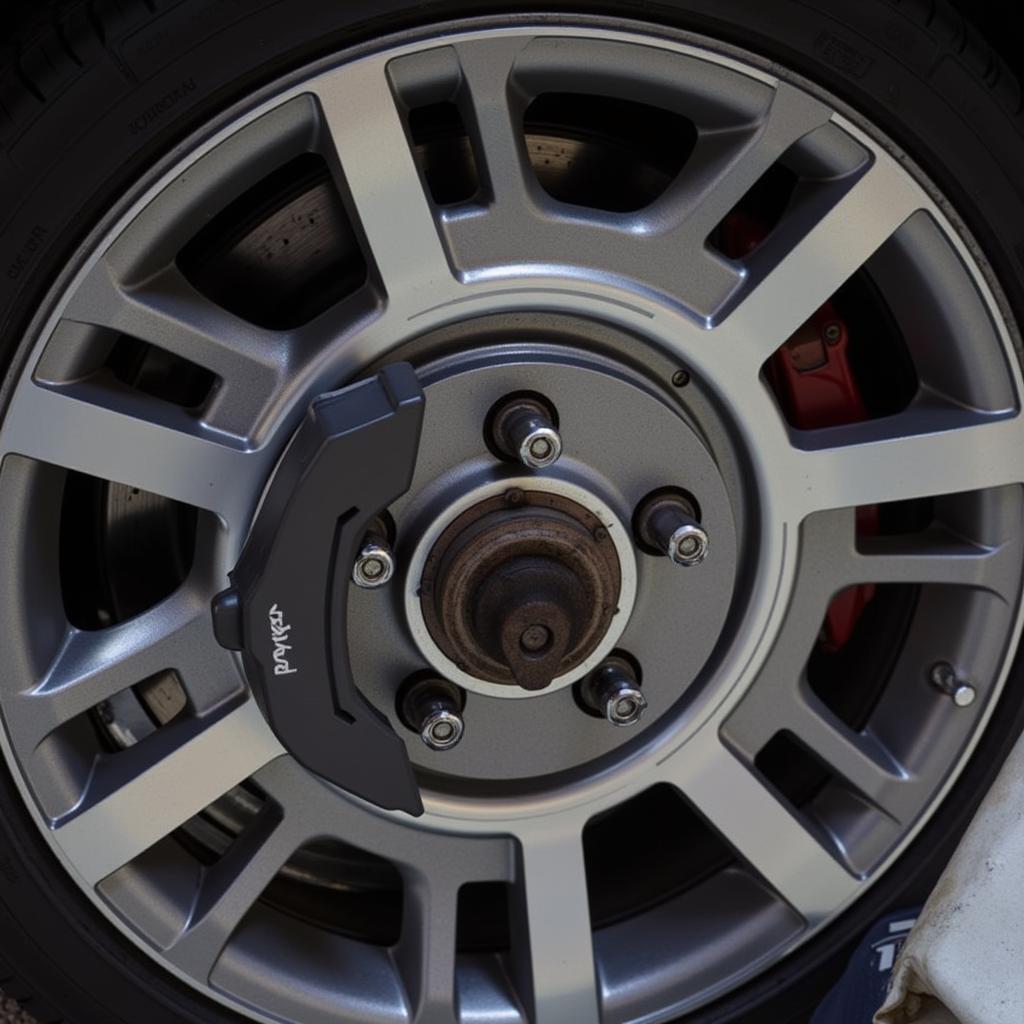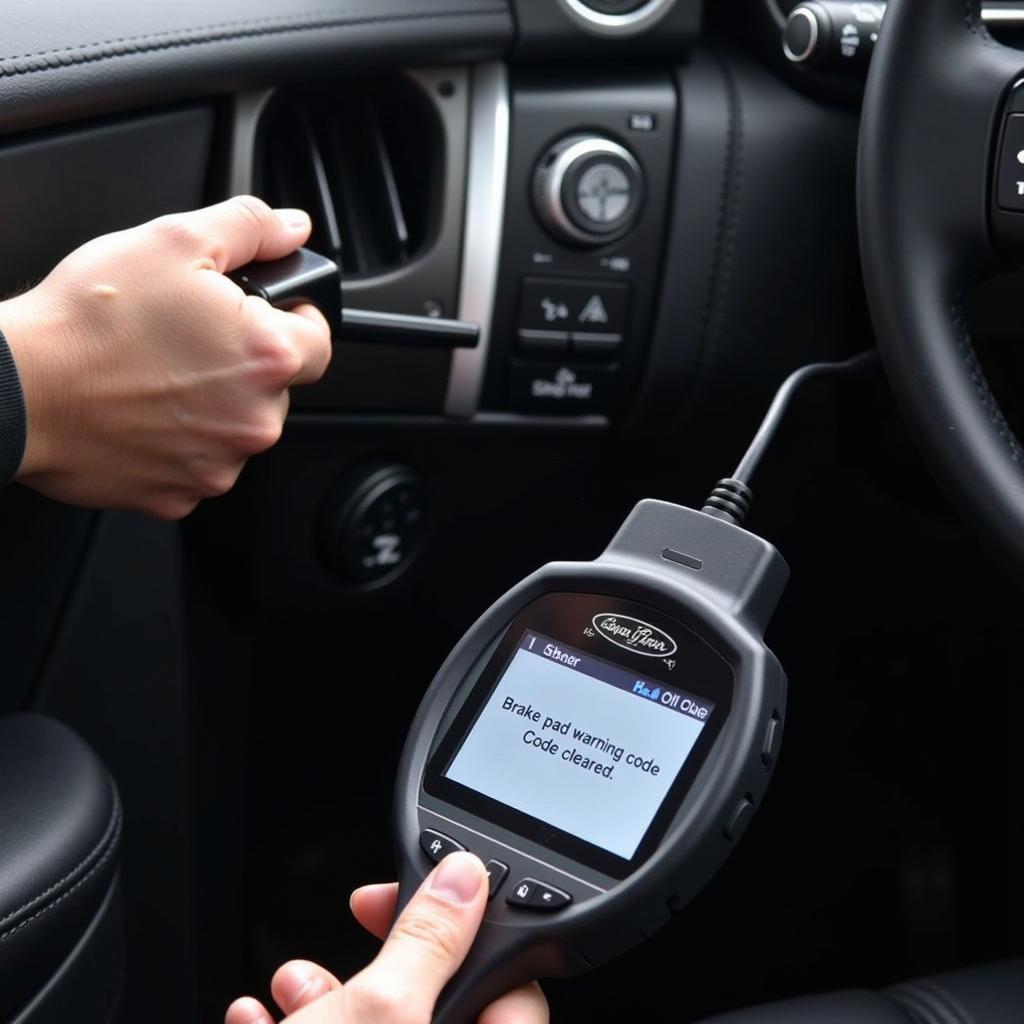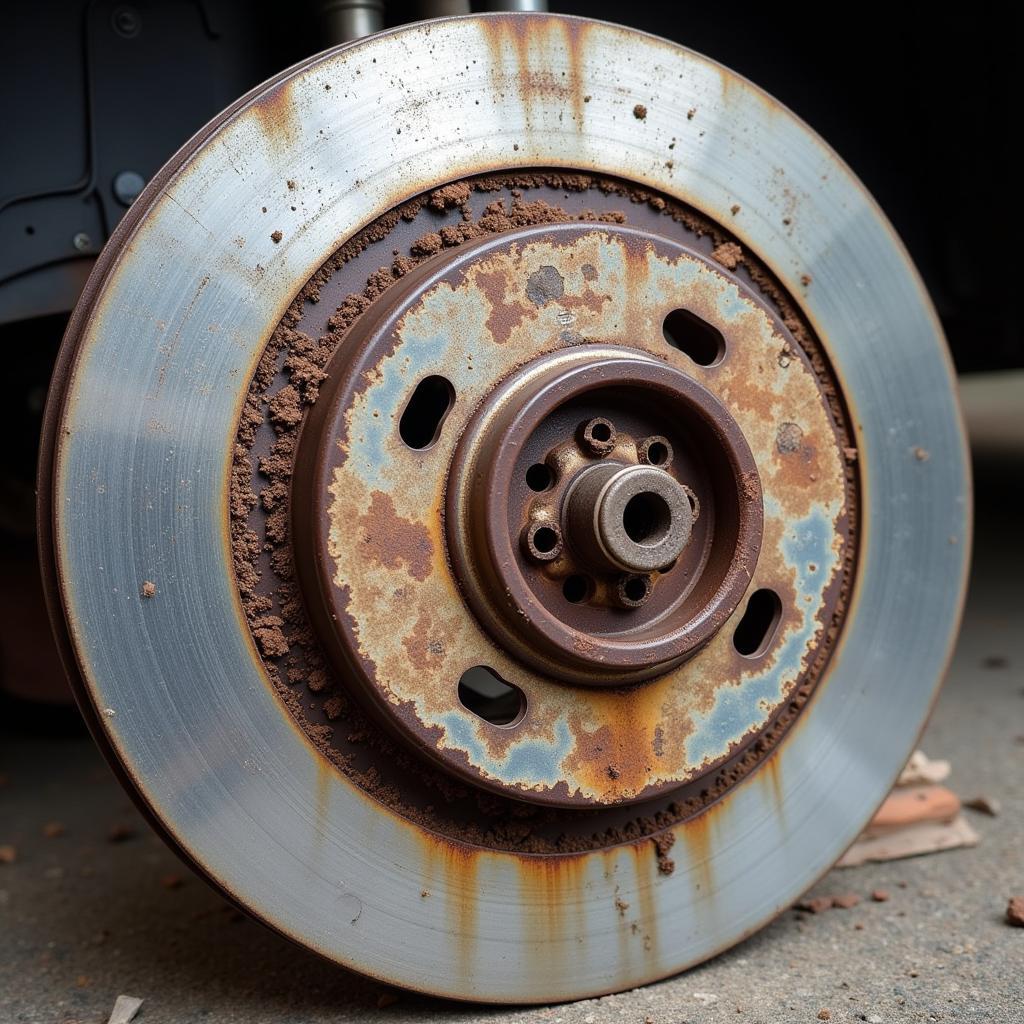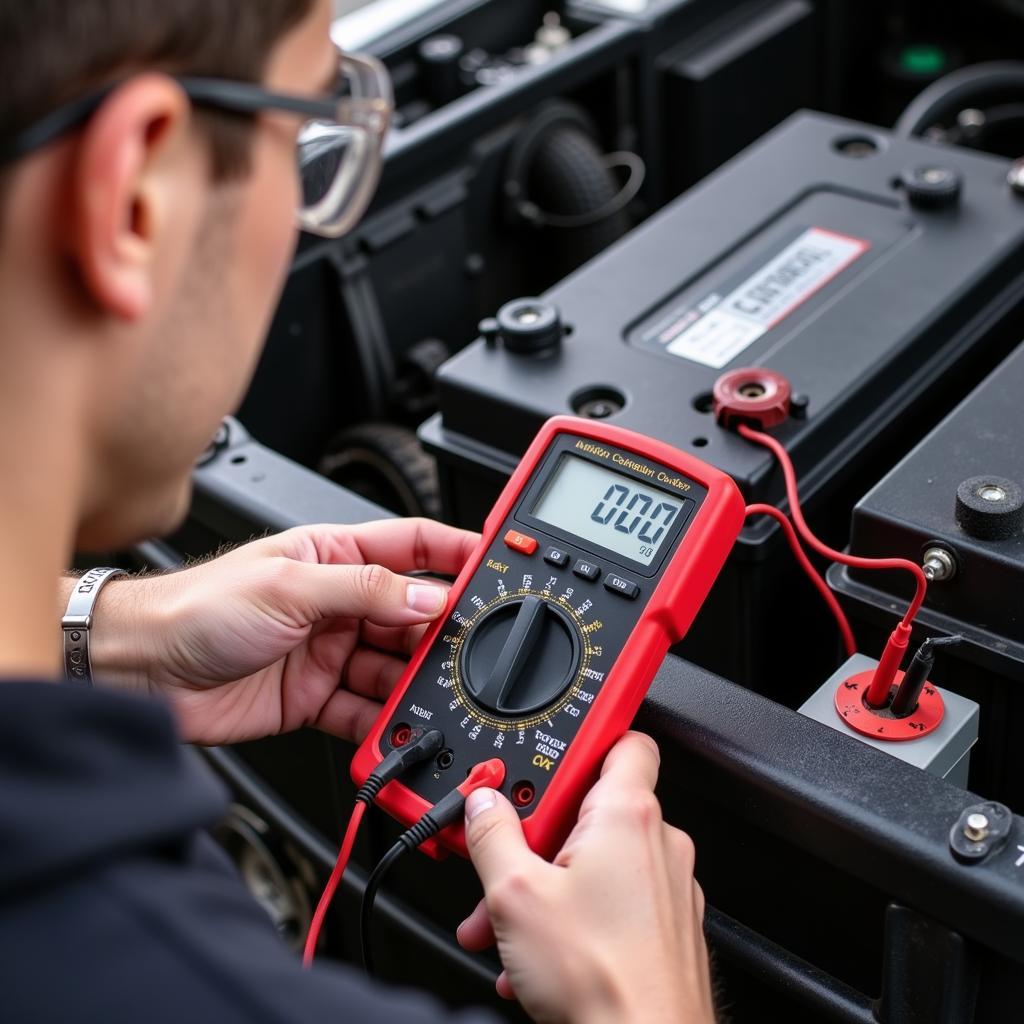The Range Rover brake pad warning light is a crucial safety feature, alerting you to potential issues with your braking system. Understanding how to address this warning, including a “range rover brake pad warning light reset,” is essential for maintaining optimal vehicle performance and safety. This article offers a comprehensive guide to help you navigate the process, from diagnosing the problem to implementing the solution.
It’s important to remember that the brake pad warning light can illuminate for several reasons. While worn brake pads are the most common culprit, other factors, such as a faulty sensor or low brake fluid, can also trigger the warning. See more about brake pads warning. Ignoring this warning light can lead to more serious problems, compromising your safety and potentially resulting in costly repairs.
Understanding the Range Rover Brake Pad Warning System
The brake pad warning system in a Range Rover relies on sensors embedded within the brake pads themselves. These sensors monitor the thickness of the brake pad material. When the pads wear down to a predetermined level, the sensor triggers the warning light on your dashboard. This system is designed to provide ample warning before the brake pads reach a critically low level, allowing you to schedule maintenance and prevent further damage.
How the Sensors Work
The sensors are small metal tabs that are part of the brake pad assembly. As the brake pad wears down, the sensor eventually makes contact with the brake rotor. This contact completes an electrical circuit, illuminating the warning light on the dashboard.
Diagnosing the Problem: Is it Really the Brake Pads?
While the warning light is typically an indicator of worn brake pads, it’s essential to confirm the diagnosis before proceeding with repairs. Sometimes, a faulty sensor, damaged wiring, or low brake fluid can trigger the light.
Checking the Brake Pads
Visually inspecting the brake pads is the first step. Look through the wheel spokes to gauge the thickness of the brake pad material. If the pads appear thin, they likely need replacement.
 Inspecting Range Rover Brake Pads
Inspecting Range Rover Brake Pads
Checking the Brake Fluid Level
Low brake fluid can also trigger the warning light. Check the brake fluid reservoir, ensuring the level is within the recommended range. If the fluid is low, top it off with the correct brake fluid type specified in your owner’s manual.
Checking for Sensor Damage
A damaged or disconnected sensor wire can also trigger the warning light, even if the brake pads are in good condition. Carefully inspect the sensor wires for any signs of damage or disconnection.
Range Rover Brake Pad Warning Light Reset Procedure
After replacing your brake pads or addressing the underlying issue that triggered the warning light, a reset may be necessary. The reset procedure may vary slightly depending on the model year of your Range Rover. You can find more information regarding range rover brake pad warning light.
Resetting the Light Manually
Some Range Rover models allow for a manual reset. This typically involves a sequence of steps using the vehicle’s onboard computer or diagnostic tools. Consult your owner’s manual for the specific procedure for your model. For related issues, visit the page on rover 75 brake pad warning.
Resetting the Light with a Diagnostic Tool
For other models, a diagnostic tool might be required to reset the warning light. These tools can be purchased online or at auto parts stores. They allow you to communicate with the vehicle’s computer and clear the warning codes.
 Resetting with a Diagnostic Tool
Resetting with a Diagnostic Tool
When to Seek Professional Help
If you’re uncomfortable performing these procedures yourself or if the warning light persists after attempting the reset, it’s crucial to seek professional assistance. A qualified mechanic can diagnose the problem accurately and perform the necessary repairs. You might also need to find out more about land rover brake pad warning light.
“Regular brake maintenance is vital for safety,” says John Smith, a certified automotive technician with over 20 years of experience. “Ignoring warning lights can lead to more significant problems down the road.”
Preventing Future Issues
Regular brake inspections are crucial for preventing future brake pad warning light issues. Adhering to your Range Rover’s recommended maintenance schedule is the best way to ensure your braking system remains in top condition.
“Don’t wait for the warning light to come on,” adds Sarah Jones, another experienced automotive technician. “Proactive maintenance can save you money and ensure your safety.”
Conclusion: Prioritize Safety and Maintenance
Addressing the Range Rover brake pad warning light promptly is paramount for your safety and the longevity of your vehicle. By understanding the system, diagnosing the problem, and implementing the appropriate solution, you can maintain optimal braking performance and avoid costly repairs. Remember to consult your owner’s manual or seek professional assistance when needed. Don’t forget to check out 2008 f-150 red brake warning light on for information on another vehicle. Addressing the “range rover brake pad warning light reset” is crucial for maintaining a safe and reliable driving experience.
FAQ
-
What does the Range Rover brake pad warning light mean? It usually means your brake pads are worn and need replacement. However, it can also indicate other issues like a faulty sensor or low brake fluid.
-
Can I drive with the brake pad warning light on? While you might be able to drive a short distance, it’s strongly advised against continuing to drive. Worn brake pads compromise your braking ability.
-
How do I reset the brake pad warning light? The reset procedure varies depending on the Range Rover model. Consult your owner’s manual or a qualified mechanic.
-
How often should I check my brake pads? It’s recommended to have your brakes inspected at least once a year or as per your Range Rover’s maintenance schedule.
-
What if the light stays on after replacing the brake pads? This could indicate a faulty sensor, wiring issue, or an incorrect reset procedure. Consult a mechanic.
-
How much does it cost to replace brake pads on a Range Rover? The cost varies depending on the model and where you get the work done.
-
Can I replace my Range Rover brake pads myself? If you have mechanical experience, you may be able to. However, it’s often best to leave this to a qualified mechanic.


